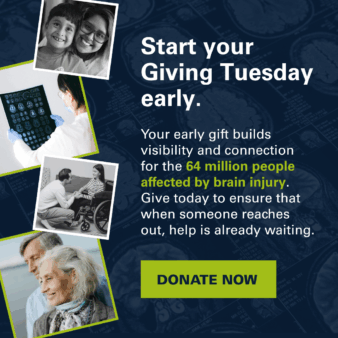Bringing Brain Injury Awareness to Children
Categories: THE Challenge!
By: Lauren Moore, Marketing and Communications Manager at BIAA
When Katianne Olson’s husband sustained a traumatic brain injury in May 2020, she needed to figure out how to explain what had happened to their two young children. As a teacher, the first place she turned was children’s literature – but she soon realized that there weren’t any books that explained brain injuries to this young demographic. So, she set out to write her own book. As a result of her personal experience and extensive research, she penned The Resilient Brain, an illustrated children’s book that explains what traumatic brain injury is, how brain injuries can happen, and how brain injuries affect people, in a way that young children can understand. Read on to learn more about what she learned and how she applied those learnings to her new book.
What sort of research did you have to do in preparation for writing The Resilient Brain?
I felt it was really important to collaborate with other families who also navigated a loved one sustaining a traumatic brain injury. Everyone’s story surrounding a traumatic brain injury is unique and individualized and I wanted to be sure that I wasn’t writing The Resilient Brain only in the perspective of our family’s journey. A lot of research went into The Resilient Brain to be sure that the medical aspects and functions of the brain and the explanations of the roles of therapists were accurately explained (especially in kid-friendly language!) We had an incredible medical team that I was able to collaborate with that included brain injury doctors, therapists, and more! I feel beyond fortunate to have experienced such a collaborative process with incredible medical professionals, families, and educators to create this much needed resource for the brain injury community!
What new or surprising information did you learn about brain injury?
I experienced through watching my husband’s rehabilitation journey, the incredible power our brains have. Being able to see it firsthand though, especially with someone you love really drove me to learn more about neuroplasticity. It was really interesting to learn about the new therapies and research that is out about a variety of therapies post injury, specifically yoga. It took a couple years after navigating my husband’s brain injury to connect with organizations like Love Your Brain and read up on the research on the power of mediation, yoga, and how powerful our brain is to rewire itself (even from my viewpoint as a caregiver!). I think often times we focus so much on the physical healing of a brain injury in those critical early moments of an accident, but addressing the emotional healing post-TBI for those who sustained a TBI and their loved ones is just equally, if not just as important as the physical healing.
What do you wish that people knew about brain injury?
It’s a lifelong journey that is going to have many ebbs and flows. The big message we often hear surrounding brain injury is that it’s an invisible injury — and it’s so true. It’s so hard to know the fight and battles that one with a brain injury and their families are going through on the outside every single day — everyone’s brain injury is unique to them.
What are your hopes for The Resilient Brain?
My hope is that The Resilient Brain can be utilized as resource that takes a very complex and confusing injury, into a very easy to understand story that helps families navigating a TBI, and also build awareness in our world on this common, invisible injury.
Most importantly, my deepest desire is that it gives those navigating this complex injury, hope. I think there can be so much darkness in those early (and really all!) moments surrounding a brain injury diagnosis… but I hope my book allows those to see the light that the brain is resilient and you are resilient as a person too.

